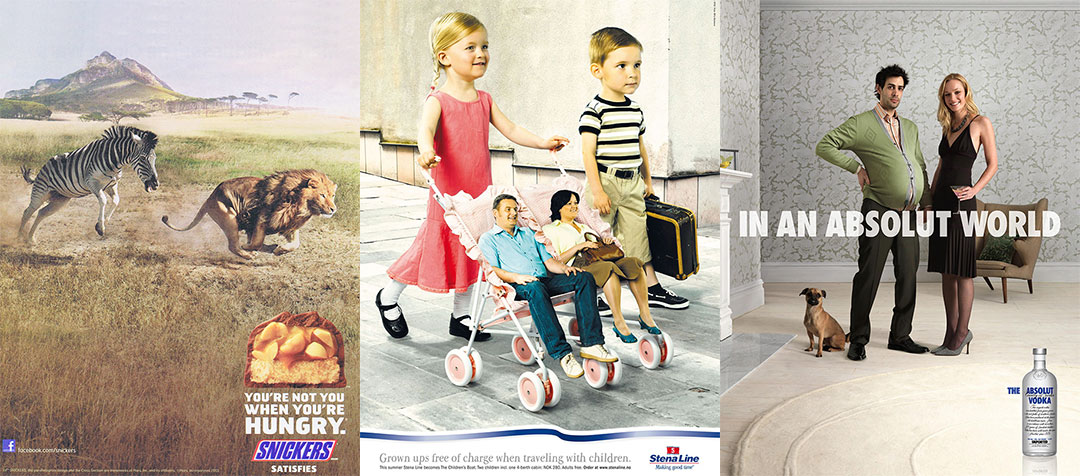Role In Reverse to Drive Your Marketing Forward

Our brains are alerted when contrast is detected. Role reversal is a creative technique used to capitalize on this cognitive phenomenon and can be applied to improve the impact of websites, direct mail pieces, and print ads.
Each of the ads above uses the role reversal method a little differently, but all represent the antithesis of what is anticipated.
SNICKERS
Subjects in the SNICKERS campaign behave out of character creating a sharp contrast between what is expected and what is experienced in each scenario. In this particular SNICKERS ad, a lion’s prey plays a predatory role. It is assumed that the “king of the jungle” would chase a zebra, but not the other way around. Zebras are considered social animals often seen in herds. Seeing a single zebra is uncommon unto itself much less hunting a species recognized for attacking game as large as an elephant.
STENA LINE
Headquartered in Sweden, Stena Line is one of the largest ferry operators in the world. Their headline sums the ad’s story in a few words “Grown-ups free of charge when traveling with children” and is reinforced visually. The difference in size between the parent-child role is the most striking, and the little subtleties, such as the inclusion of a stroller add punctuation to the ad’s message. The elements within the print ad work together synergistically to create a lasting impression which aligns with the ad’s offer.
ABSOLUT VODKA
Absolut Vodka takes contrast to the extreme using a pregnant male as the focal point of its ad. Within this setting, the notion of combining an unborn and alcohol is provocative unto itself, but seeing a martini in the hands of a woman, by sheer association, makes an over-the-top impression. The headline “IN AN ABSOLUT WORLD” pre-establishes the ad’s premise to convey a light-hearted tone.
SIMILARITIES AMONGST DIFFERENCES
The contrast between what we expect and what we experience alerts our mind to the incongruities within all three ads. The effectiveness of the role reversal technique is predicated on a consumer’s familiarity with the subject matter and the ad’s message.
If the role reversal is not perceived as overtly obvious or appears disjointed and confusing, the ad may be viewed as distasteful or a deceptive attempt at bait-and-switch.
To increase the impact of your next “role reversal” ad and decrease the possibility of it backfiring, test people’s reactions to it internally prior to its public release. If even a small number of people in or out of your industry don’t instantly understand the point the ad is making, investigate why by asking open-ended questions without appearing offended or defensive by their answers. Patterns will likely emerge when evaluating feedback from five or six people to help inform you on next steps.
“Role reversal” ads start by defining their purpose and their point. The concept should be simple and straight forward enough to be understood without a need for explanation. After you have crafted a clear, compelling, and concise message, think of how it could be conveyed visually (a la Pictionary). Then devise all the ways it could be communicated sarcastically, humorously, etc.
Attention is a prerequisite to persuasion, and using role reversal is one approach to create cognitive contrast and attract your audience at first glance.
